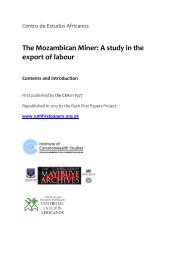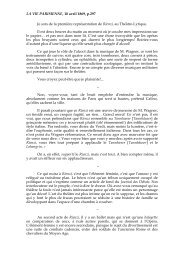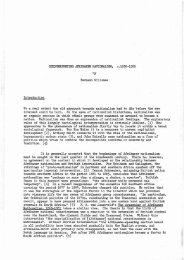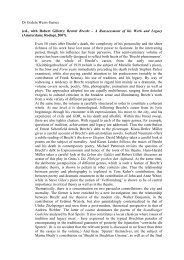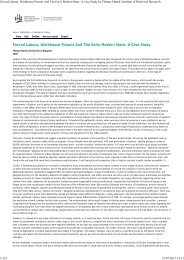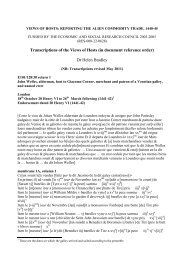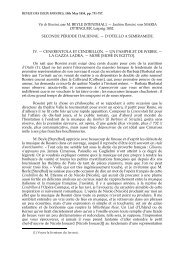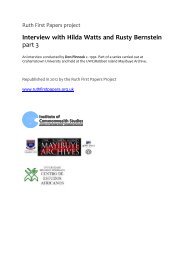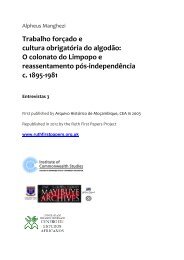Roraima: Brazil's northernmost frontier by John Hemming - SAS-Space
Roraima: Brazil's northernmost frontier by John Hemming - SAS-Space
Roraima: Brazil's northernmost frontier by John Hemming - SAS-Space
You also want an ePaper? Increase the reach of your titles
YUMPU automatically turns print PDFs into web optimized ePapers that Google loves.
From the middle of the nineteenth century, rubber came to dominate the<br />
economy of Amazonia. A series of inventions had perfected rubber as a wonderfully<br />
versatile product - impermeable, durable and elastic - and the<br />
Hevea brasiliensis tree, whose sap produced the finest rubber, grew only in<br />
the Amazon basin. World demand for rubber expanded voraciously, particularly<br />
after the invention of the pneumatic tyre and of bicycles and eventually<br />
motor cars. Rubber output from Amazonia increased to keep pace with<br />
demand. There was immigration of seringueiros (rubber tappers) from other<br />
parts of Brasil; and Manaus at the mouth of the Rio Negro developed into a<br />
boom town deep in the midst of the rainforests.<br />
The Hevea tree is almost unknown on the Rio Branco, so that <strong>Roraima</strong><br />
escaped the full impact of the rubber boom. However, the newly rich rubber<br />
barons of Manaus wanted meat; and <strong>Roraima</strong> was the closest part of the Province<br />
of Amazonas capable of providing the necessary pasture for cattle.<br />
Successive presidents of Amazonas worried, in their published annual<br />
reports, about the lack of fresh meat in the Manaus market. Roughly a third<br />
of the live cattle reaching the city came from <strong>Roraima</strong>, but the quantity was<br />
very small. A table of cattle shipments published in 1869 showed an average<br />
of fifty animals a year from the northern region. During the seventeen years<br />
covered <strong>by</strong> this survey, a maximum of 105 head arrived in 1862 and a<br />
minimum of twenty in 1857. The cattle came down-river in batalhoes, big<br />
boats each carrying from ten to twenty animals and taking three months<br />
over the round trip. 7<br />
In 1872 General Jose de Miranda da Silva Reis visited the upper Rio<br />
Branco - the first President of Amazonas to do so. He was impressed <strong>by</strong> the<br />
magnificent plains and <strong>by</strong> the fine cattle on the national fazendas and on the<br />
private ranches - although many animals were being killed <strong>by</strong> jaguars<br />
because of lack of manpower to protect them. A few years earlier, one of his<br />
predecessors as provincial president had recommended selling the national<br />
fazendas because they were costing the state more than they earned. But<br />
General Silva Reis hoped to make them viable <strong>by</strong> organising steam navigation<br />
to move the cattle above and below the rapids at Caracarai.<br />
The general's hopes were not realised. His successors became increasingly<br />
exasperated <strong>by</strong> the cost of maintaining the national fazendas of Rio Branco<br />
and <strong>by</strong> the paltry quantity of cattle that they exported to Manaus. The<br />
ranches were impossibly large, occupying long sections of the main rivers<br />
and stretching away from them across the savannas towards distant<br />
unexplored <strong>frontier</strong>s. There was no incentive for the ranch managers to<br />
develop the national herds. It was therefore decided to privatise the national<br />
fazendas.<br />
On 25 October 1878 the provincial president Barao de Maracaju leased<br />
the two national ranches for nine years to Leopoldo Pereira Tavares and to<br />
Comendador Antonio Jose Gomes Pereira Bastos. The lease was on condition<br />
that they establish a monthly steamer service to bring cattle down the



